Abstract
The data on root vegetables in Japanese agriculture, particularly autumn and winter radishes, is interesting. The national harvest volume for 2022 will be 784kt, which, based on the cultivated area of 18.8kha, indicates high production efficiency. In particular, Chiba achieved a shipping volume of 82.9kt, suggesting that cultivation and distribution in the region is thriving. This may be due to climatic conditions and advances in agricultural technology. It also suggests that there is high demand for radishes. Based on past trends, we can see that root vegetable cultivation occupies an important position in Japanese agriculture, with efficient production and distribution taking into account regional characteristics.
Autumn/winter radish harvest volume (main data).
Looking at data on Japan’s autumn/winter daikon harvest from 1973 to 2022, we can see a tendency for it to peak in certain years. The national harvest record in 1977 was 2.29 Mt, which represents a decline of 34.3% compared to the current peak. This decline may be due to structural changes in agriculture and changes in market demand. Climate change and advances in agricultural technology are also cited as contributing factors. However, the data does not show any consistent periodicity and shows large fluctuations in yields from year to year. This suggests that many factors are at play, including weather conditions and changes in agricultural policies. Overall, autumn/winter radish harvest volumes have fluctuated widely and, although they have decreased compared to their peak, no stable trend has been observed.
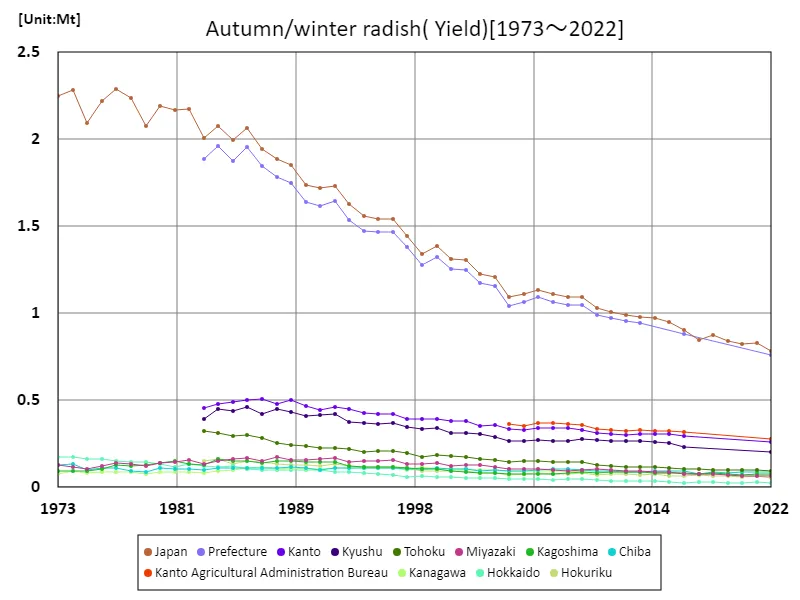

The maximum is 2.29Mt[1977] of Japan, and the current value is about 34.3%
Autumn/winter daikon radish harvest volume (by prefecture).
Looking at data for 2022 on root vegetable harvests in Japanese agriculture, Chiba recorded the highest yield of 90.1 kt among all prefectures, indicating the highest yield to date. This suggests that Chiba Prefecture is a major region for root vegetable production. Production in other regions may also be increasing, suggesting an overall increase in demand for root vegetables. This trend is thought to reflect the increasing demand for root vegetables amid a growing health consciousness and movement toward local production and consumption. It is also possible that advances in agricultural technology and improved varieties have contributed to increased production. Overall, root vegetable harvests in 2022 are expected to be at a high level, with Chiba Prefecture in particular playing a leading role.
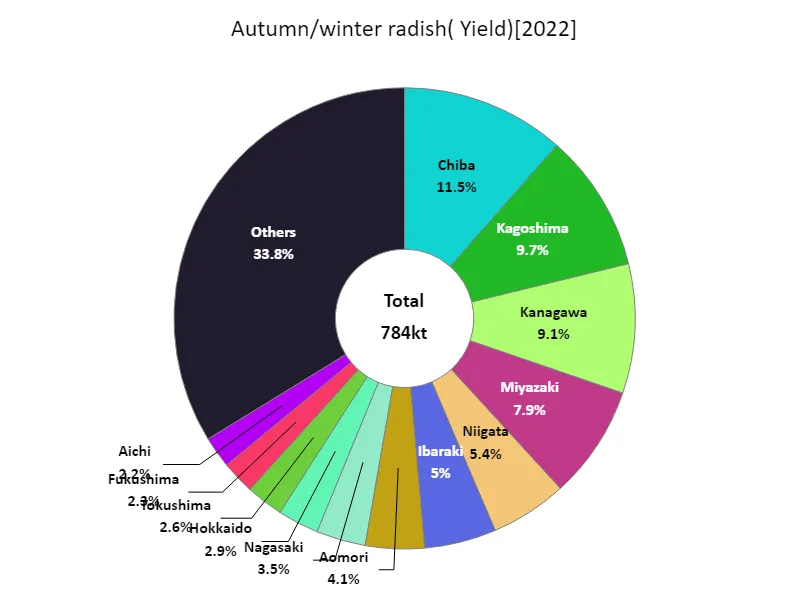

The maximum is 90.1kt of Chiba, the average is 16.7kt, and the total is 784kt
Area planted with autumn/winter radish (main data).
Looking at data on the area planted with autumn-winter daikon in Japan from 1973 to 2022, the maximum planted area nationwide was recorded in 1973 at 61.2 kha. However, current data shows a 30.7% decrease from the peak. This decline may be due to structural changes in agriculture and changes in market demand. It is also possible that factors such as conversion to other crops and urbanization are contributing to the decrease in cultivated area. On the other hand, while the downward trend continues, it is possible that productivity is actually increasing due to advances in agricultural technology and greater efficiency. Overall, the area planted to autumn-winter radishes has decreased from past peaks, but this is fluctuating due to changes in agricultural structure and technology.
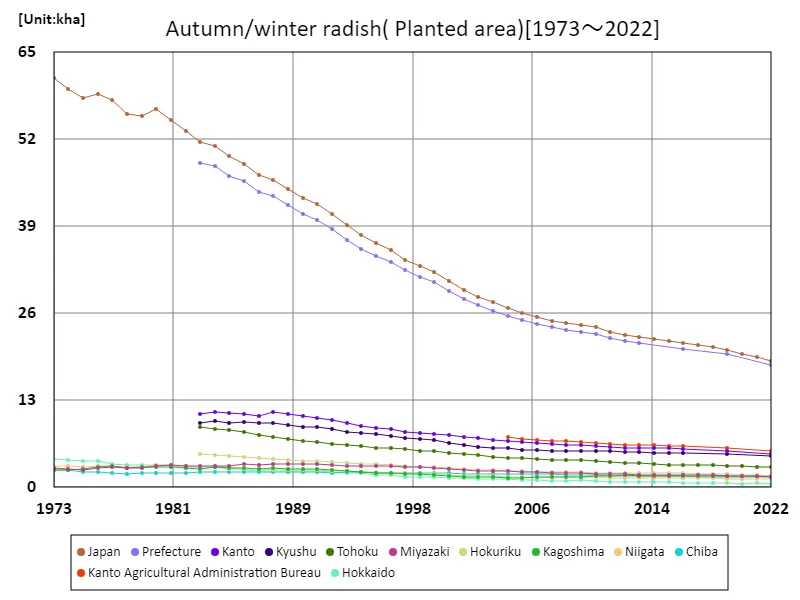

The maximum is 61.2kha[1973] of Japan, and the current value is about 30.7%
Areas planted for autumn/winter daikon radishes (by prefecture).
Looking at the data on the area of root crops cultivated in Japanese agriculture in 2022, by prefecture, Kagoshima recorded the largest area overall at 1.63kha, the highest value to date. This suggests that Kagoshima is a major region for root crop production. Additionally, the area planted in other regions may also be increasing, suggesting an overall increase in demand for root crops. This trend is thought to reflect the increasing demand for root vegetables amid a growing health consciousness and movement toward local production and consumption. It is also possible that advances in agricultural technology and improved varieties have contributed to the increase in cultivated area. Overall, the area planted to root vegetables in 2022 will be at a high level, with Kagoshima in particular playing a leading role.
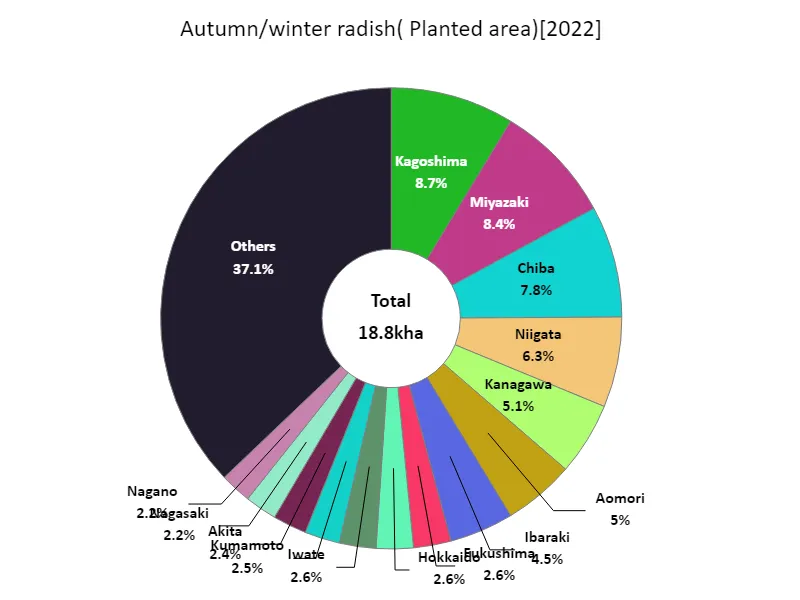

The maximum is 1.63kha of Kagoshima, the average is 400ha, and the total is 18.8kha
Autumn and winter daikon shipping volume.
Looking at the shipping volume data for autumn/winter radishes in Japanese agriculture in 2022, Chiba Prefecture had the highest overall volume at 82.9kt, with an average shipping volume of 13.2kt. Total shipments reached 623kt. This indicates that Chiba Prefecture is a major producer of autumn and winter daikon radishes, and that production in the region contributes significantly to the overall shipping volume. Additionally, the average shipping volume was 13.2kt, indicating that there is a certain level of demand nationwide. As agricultural shipments remain high, demand for root crops is likely to remain stable. Furthermore, the large total shipment figure of 623kt indicates the important position that root vegetables occupy in Japanese food culture. Overall, shipments of autumn and winter daikon radishes in 2022 are expected to be stable, with Chiba Prefecture being particularly notable as the center of this volume.
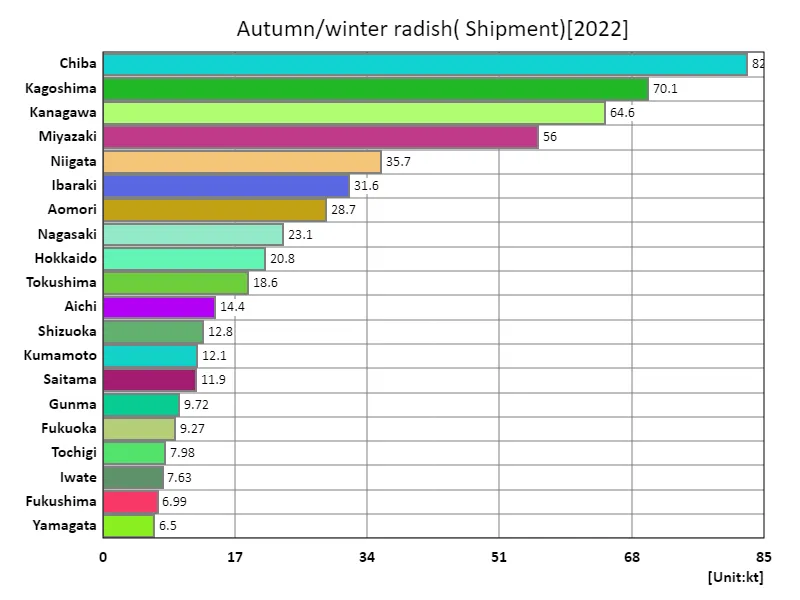

The maximum is 82.9kt of Chiba, the average is 13.2kt, and the total is 623kt
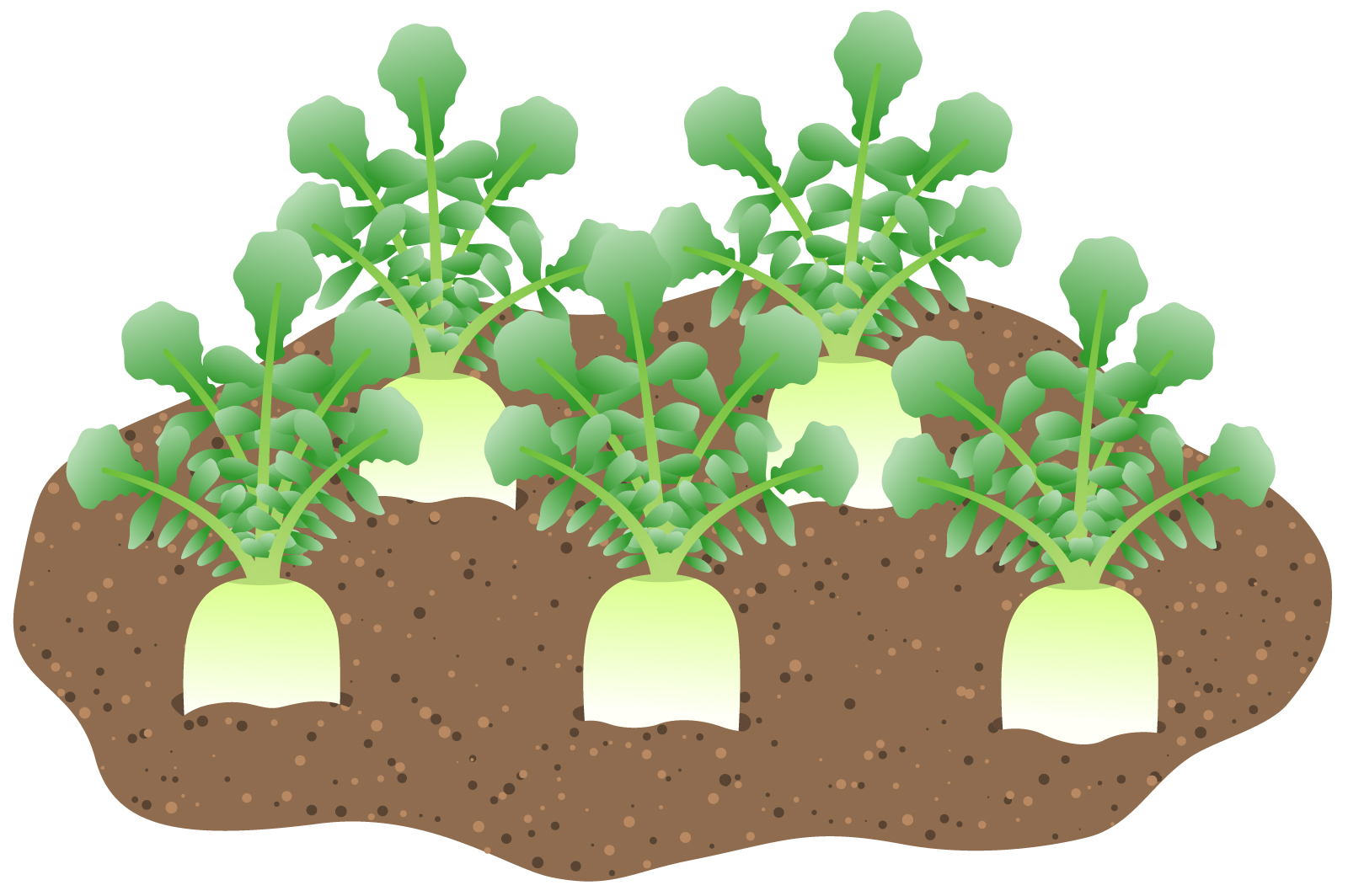


Comments